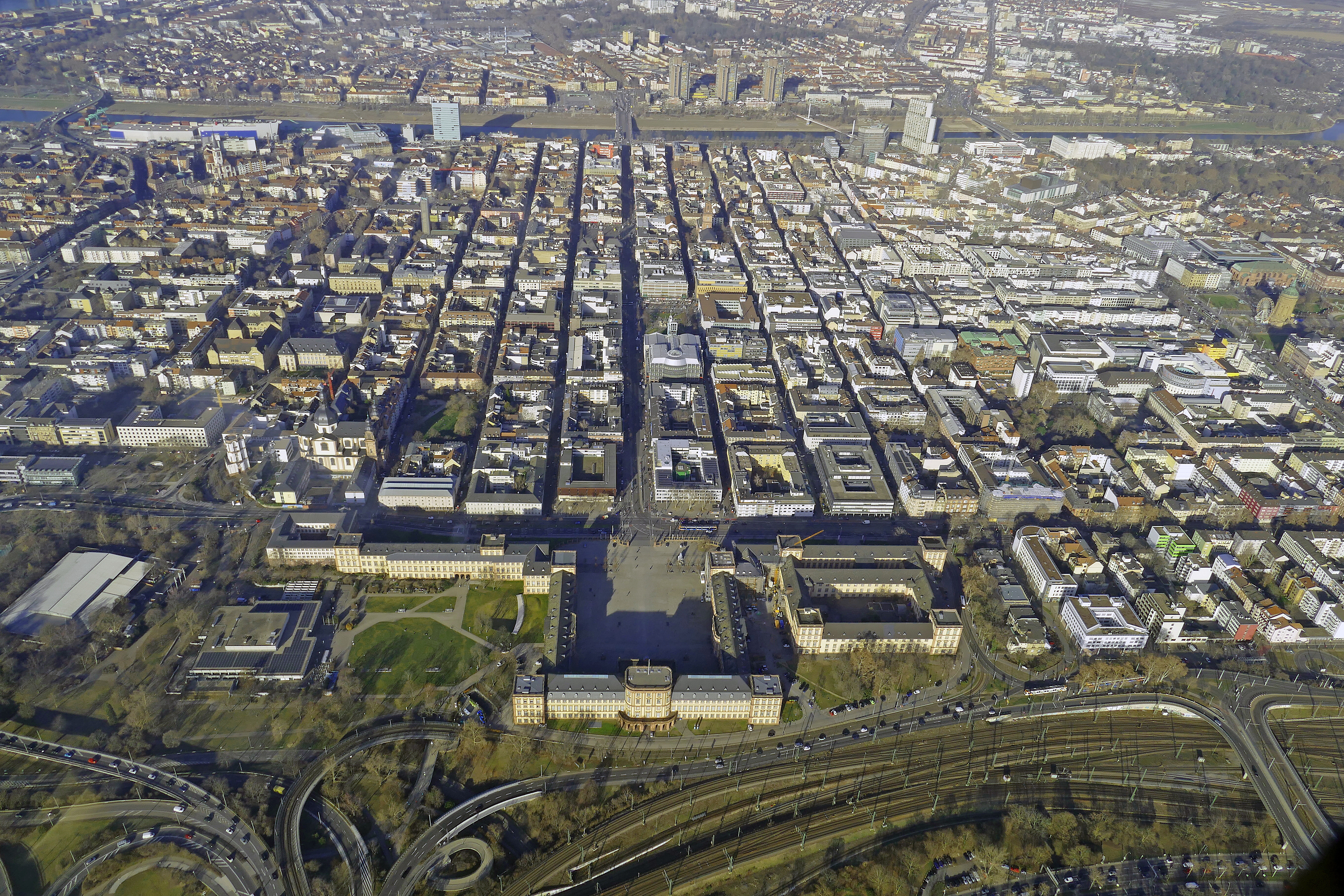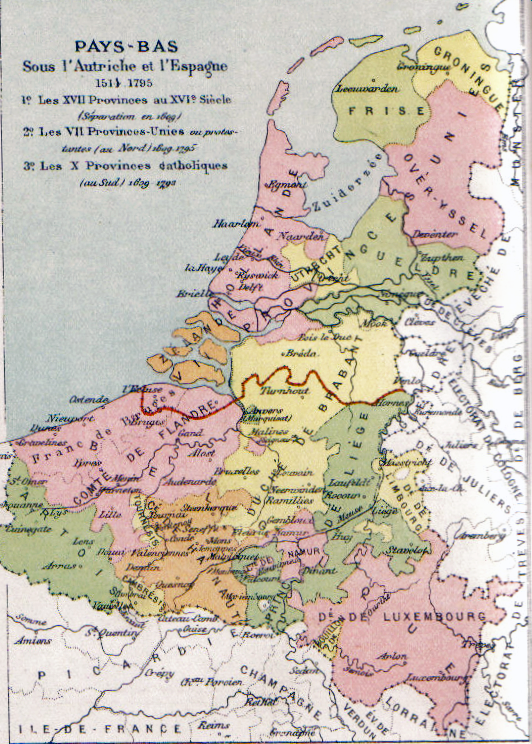|
Louis DuBois (Huguenot)
Louis Du Bois (21 October 1626 – 1696) was a Huguenot colonist in New Netherland who, with two of his sons and nine other refugees, founded the town of New Paltz, New York. These Protestant refugees fled Catholic persecution in France, emigrating to the Rhenish Palatinate (in present-day Germany) and then to New Netherland, where they settled in Wiltwyck (present day Kingston, New York) and Nieuw Dorp (present-day Hurley, New York, settlements midway between New Amsterdam (present day New York City) and Beverwyck (today known as Albany, New York) before ultimately founding New Paltz. Early life Louis was the son of Chrétien du Bois and Françoise le Poivre of Wicres in Artois, and later Herlies in Romance Flanders, then part of Spanish Netherlands, today included in the Hauts-de-France region, France. The third part of Horton, "The Memory of the Just is Blessed", begins with an extract from a document in the Archives du Nord, and commentary: The article seemingly demons ... [...More Info...] [...Related Items...] OR: [Wikipedia] [Google] [Baidu] |
Babylonian Captivity
The Babylonian captivity or Babylonian exile is the period in Jewish history during which a large number of Judeans from the ancient Kingdom of Judah were captives in Babylon, the capital city of the Neo-Babylonian Empire, following their defeat in the Jewish–Babylonian War and the destruction of Solomon's Temple in Jerusalem. The event is described in the Hebrew Bible, and its historicity is supported by archaeological and extra-biblical evidence. After the Battle of Carchemish in 605 BCE, the Babylonian king Nebuchadnezzar II besieged Jerusalem, which resulted in tribute being paid by the Judean king Jehoiakim. In the fourth year of Nebuchadnezzar II's reign, Jehoiakim refused to pay further tribute, which led to another siege of the city in Nebuchadnezzar II's seventh year (598/597 BCE) that culminated in the death of Jehoiakim and the exile to Babylonia of his successor Jeconiah, his court, and many others; Jeconiah's successor Zedekiah and others were exiled when Nebuch ... [...More Info...] [...Related Items...] OR: [Wikipedia] [Google] [Baidu] |
Esopus Indians
The Esopus tribe () was a tribe of Lenape (Delaware) Native Americans who were native to the Catskill Mountains of what is now Upstate New York. Their lands included modern-day Ulster and Sullivan counties. The Lenape originally resided in the Delaware River Valley before their territory extended into parts of modern-day New York (including the Catskill Mountains and Lower Hudson River Valley), Pennsylvania, New Jersey, and Eastern Delaware. The exact population of the Lenape is unknown but estimated to have been around 10,000 people in 1600. The Esopus people spoke an Algonquin dialect known as Munsee. The tribe generally lived in small communities consisting of 10 to 100 people. They traveled seasonally and settled mostly in clearings by sources of water, developing diverse agricultural practices. The Esopus people's main crop was corn, but also planted or foraged beans, squash, hickory, nuts, and berries in addition to hunting elk, deer, rabbits, turkey, raccoons, waterfowl, ... [...More Info...] [...Related Items...] OR: [Wikipedia] [Google] [Baidu] |
Mannheim, Germany
Mannheim (; Palatine German: or ), officially the University City of Mannheim (german: Universitätsstadt Mannheim), is the second-largest city in the German state of Baden-Württemberg after the state capital of Stuttgart, and Germany's 21st-largest city, with a 2020 population of 309,119 inhabitants. The city is the cultural and economic centre of the Rhine-Neckar Metropolitan Region, Germany's seventh-largest metropolitan region with nearly 2.4 million inhabitants and over 900,000 employees. Mannheim is located at the confluence of the Rhine and the Neckar in the Kurpfalz (Electoral Palatinate) region of northwestern Baden-Württemberg. The city lies in the Upper Rhine Plain, Germany's warmest region. Together with Hamburg, Mannheim is the only city bordering two other federal states. It forms a continuous conurbation of around 480,000 inhabitants with Ludwigshafen am Rhein in the neighbouring state of Rhineland-Palatinate, on the other side of the Rhine. Some norther ... [...More Info...] [...Related Items...] OR: [Wikipedia] [Google] [Baidu] |
French Westhoek
Westhoek (; ; Dutch for "west corner") or Maritime Flanders (french: Flandre maritime) is a region in Belgium and France and includes the following areas: #Belgian Westhoek ( nl, Belgische Westhoek, link=no) including the West Flanders of Diksmuide, Ypres, and Veurne including the cities of Veurne, Poperinge, Wervik, Ypres, De Panne, Langemark-Poelkapelle, Diksmuide and Koekelare. However, the three Belgian coast municipalities of De Panne, Koksijde, and Nieuwpoort are frequently considered a separate region known as the Belgian or Flemish West Coast (). #French Westhoek (french: Westhoek français, link=no; nl, Franse Westhoek, link=no), roughly the of Dunkirk, including the cities of Dunkirk, Gravelines, and Hazebrouck, itself part of a larger area known as French Flanders. Outside Dutch-language sources, Westhoek sometimes refers only to French Westhoek. French Westhoek Geography French Westhoek is the northern part of French Flanders, lying between the river Lys ... [...More Info...] [...Related Items...] OR: [Wikipedia] [Google] [Baidu] |
Flemish Dutch
Flemish (''Vlaams'') is a Low Franconian dialect cluster of the Dutch language. It is sometimes referred to as Flemish Dutch (), Belgian Dutch ( ), or Southern Dutch (). Flemish is native to Flanders, a historical region in northern Belgium; it is spoken by Flemings, the dominant ethnic group of the region. Outside of Flanders, it is also spoken to some extent in French Flanders and the Dutch Zeelandic Flanders. Terminology The term ''Flemish'' itself has become ambiguous. Nowadays, it is used in at least five ways, depending on the context. These include: # An indication of Dutch written and spoken in Flanders including the Dutch standard language as well as the non-standardized dialects, including intermediate forms between vernacular dialects and the standard. Some linguists avoid the term ''Flemish'' in this context and prefer the designation ''Belgian-Dutch'' or ''South-Dutch'' # A synonym for the so-called intermediate language in Flanders region, the # An indicatio ... [...More Info...] [...Related Items...] OR: [Wikipedia] [Google] [Baidu] |
Walloon Flanders
Walloon Flanders (Dutch: ''Waals Vlaanderen'', French: ''Flandre wallonne'') was a semi-independent part of the County of Flanders, composed of the Burgrave, burgraviates of Lille, Douai and Orchies. It is sometimes referred to as ''Lille–Douai–Orchies.'' The population of the region speak Walloon and Picardy dialects. History The term "Walloon Flanders" appeared after the French conquest and was fixed in the literature by the beginning of the 19th century. Walloon Flanders was part of the County of Flanders from the early Middle Ages, but was ceded to the Kingdom of France from 1304 to 1369, by the Treaty of Athis-sur-Orge which concluded the Franco-Flemish War (1297-1305). As a result, it was to some degree institutionally distinct from the County of Flanders and in some lists it even features as one of the Seventeen Provinces. Furthermore, Walloon Flanders adhered to the Union of Arras in 1579, whereas the County of Flanders joined the Union of Utrecht. In 1678, Walloon ... [...More Info...] [...Related Items...] OR: [Wikipedia] [Google] [Baidu] |
Picard (language)
Picard (, also , ) is a ''langue d'oïl'' of the Romance language family spoken in the northernmost part of France and Hainaut province in Belgium. Administratively, this area is divided between the French Hauts-de-France region and the Belgian Wallonia along the border between both countries due to its traditional core being the districts of Tournai and Mons ( Walloon Picardy). Picard is referred to by different names as residents of Picardy simply call it , but it is more commonly known as or in the more populated (Romance Flanders around the metropolis of Lille and Douai, and northeast Artois around Béthune and Lens). It is also named around Valenciennes, around Roubaix, or simply in general. In 1998, Picard native speakers amounted to 700,000 individuals, the vast majority of which were elderly people (aged 65 and over). Since its daily use had drastically declined, Picard was declared by the United Nations Educational, Scientific, and Cultural Organisation (UNESCO) a ... [...More Info...] [...Related Items...] OR: [Wikipedia] [Google] [Baidu] |
Hauts-de-France
Hauts-de-France (; pcd, Heuts-d'Franche; , also ''Upper France'') is the northernmost Regions of France, region of France, created by the territorial reform of French regions in 2014, from a merger of Nord-Pas-de-Calais and Picardy. Its Prefectures in France, prefecture is Lille. The new region came into existence on 1 January 2016, after 2015 French regional elections, regional elections in December 2015. The Conseil d'État (France), Conseil d'État approved Hauts-de-France as the name of the region on 28 September 2016, effective the following 30 September. With 6,009,976 inhabitants (as of 1 January 2015) and a population density of 189 inhabitants/km2, it is the third most populous region in France and the second most densely populated in metropolitan France after its southern neighbour Île-de-France. It is bordered by Belgium to the north. Toponymy The region's working title, interim name ''Nord-Pas-de-Calais-Picardie'' was a hyphenated name, hyphenated placename, creat ... [...More Info...] [...Related Items...] OR: [Wikipedia] [Google] [Baidu] |
Southern Netherlands
The Southern Netherlands, also called the Catholic Netherlands, were the parts of the Low Countries belonging to the Holy Roman Empire which were at first largely controlled by Habsburg Spain (Spanish Netherlands, 1556–1714) and later by the Austrian Habsburgs (Austrian Netherlands, 1714–1794) until occupied and annexed by Revolutionary France (1794–1815). The region also included a number of smaller states that were never ruled by Spain or Austria: the Prince-Bishopric of Liège, the Imperial Abbey of Stavelot-Malmedy, the County of Bouillon, the County of Horne and the Princely Abbey of Thorn. The Southern Netherlands comprised most of modern-day Belgium and Luxembourg, small parts of the modern Netherlands and Germany (the Upper Guelders region, as well as the Bitburg area in Germany, then part of Luxembourg), in addition to (until 1678) most of the present Nord-Pas-de-Calais region, and Longwy area in northern France. The (southern) Upper Guelders region consisted ... [...More Info...] [...Related Items...] OR: [Wikipedia] [Google] [Baidu] |
Romance Flanders
Romance Flanders or Gallicant Flanders is a historical term for the part of the County of Flanders in which Romance languages were spoken, such as varieties of Picard. Today the region straddles the border of France and Belgium. Name In Early Modern English, Romance Flanders was also known as ''Welch Flanders'' or ''Gallike Flanders''. The original French name is ''Flandre Gallicane'' or ''Flandre Gallicante'', derived from the Latin term ''Gallo Flandria'' or ''Flandria Gallica''. The term ''Walloon Flanders'' has also been used to designate the region although strictly this would be a political rather than a linguistic designation as the local Romance dialect is Picard and not Walloon even though part of Romance Flanders lies within the Belgian political region of Wallonia. Territory In France : * The Lilloise Flanders (in French ''Flandre Lilloise'', in Dutch ''Rijsels-Vlaanderen''). Historically this area made up the semi-autonomous region of the County of Flanders know ... [...More Info...] [...Related Items...] OR: [Wikipedia] [Google] [Baidu] |



